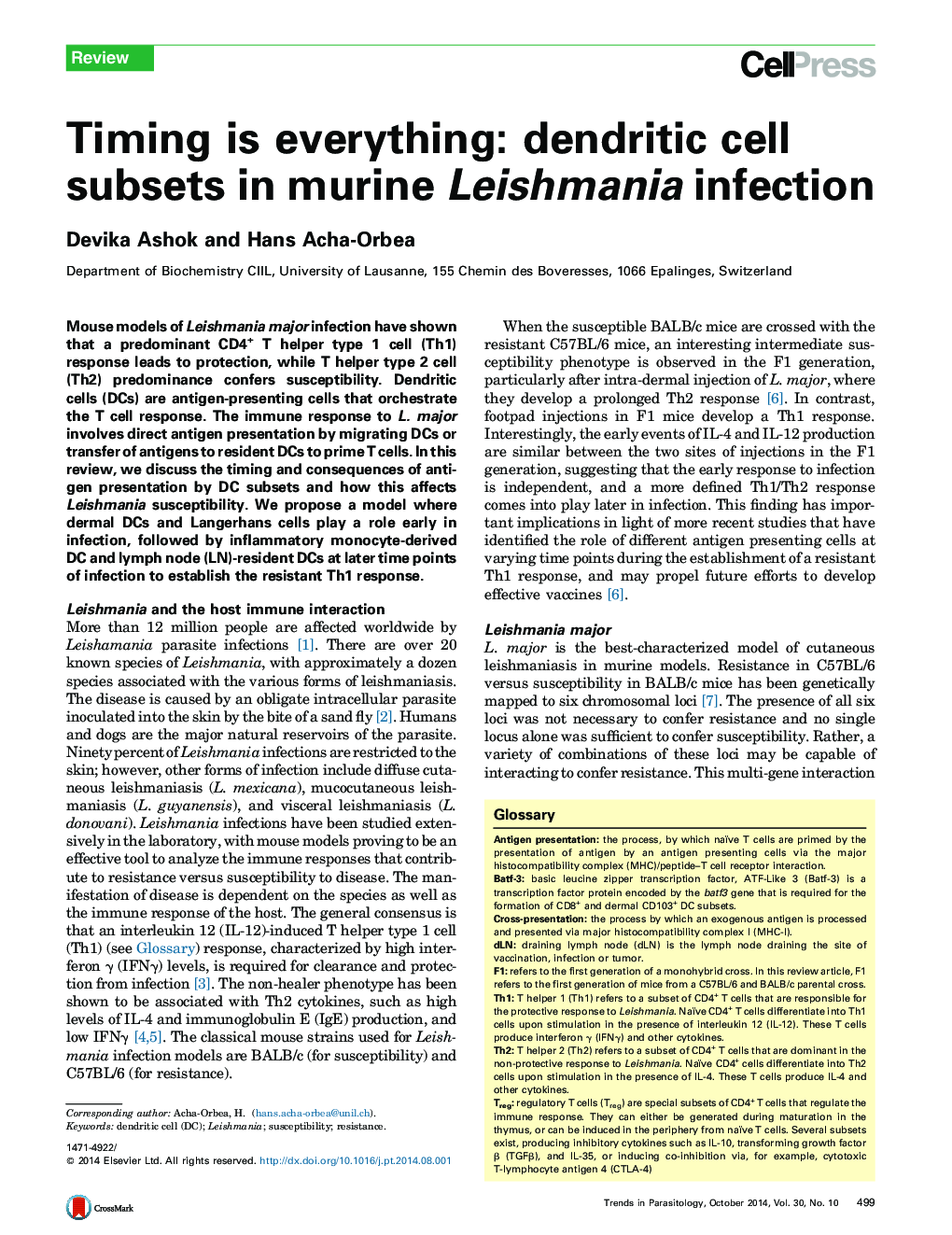| Article ID | Journal | Published Year | Pages | File Type |
|---|---|---|---|---|
| 3423109 | Trends in Parasitology | 2014 | 9 Pages |
•DC subsets play different roles at different time points of Leishmania infection.•Cross-presenting DC subsets are required to confer protection by Th1 cells.•A post-infection vaccine may be possible.
Mouse models of Leishmania major infection have shown that a predominant CD4+ T helper type 1 cell (Th1) response leads to protection, while T helper type 2 cell (Th2) predominance confers susceptibility. Dendritic cells (DCs) are antigen-presenting cells that orchestrate the T cell response. The immune response to L. major involves direct antigen presentation by migrating DCs or transfer of antigens to resident DCs to prime T cells. In this review, we discuss the timing and consequences of antigen presentation by DC subsets and how this affects Leishmania susceptibility. We propose a model where dermal DCs and Langerhans cells play a role early in infection, followed by inflammatory monocyte-derived DC and lymph node (LN)-resident DCs at later time points of infection to establish the resistant Th1 response.
